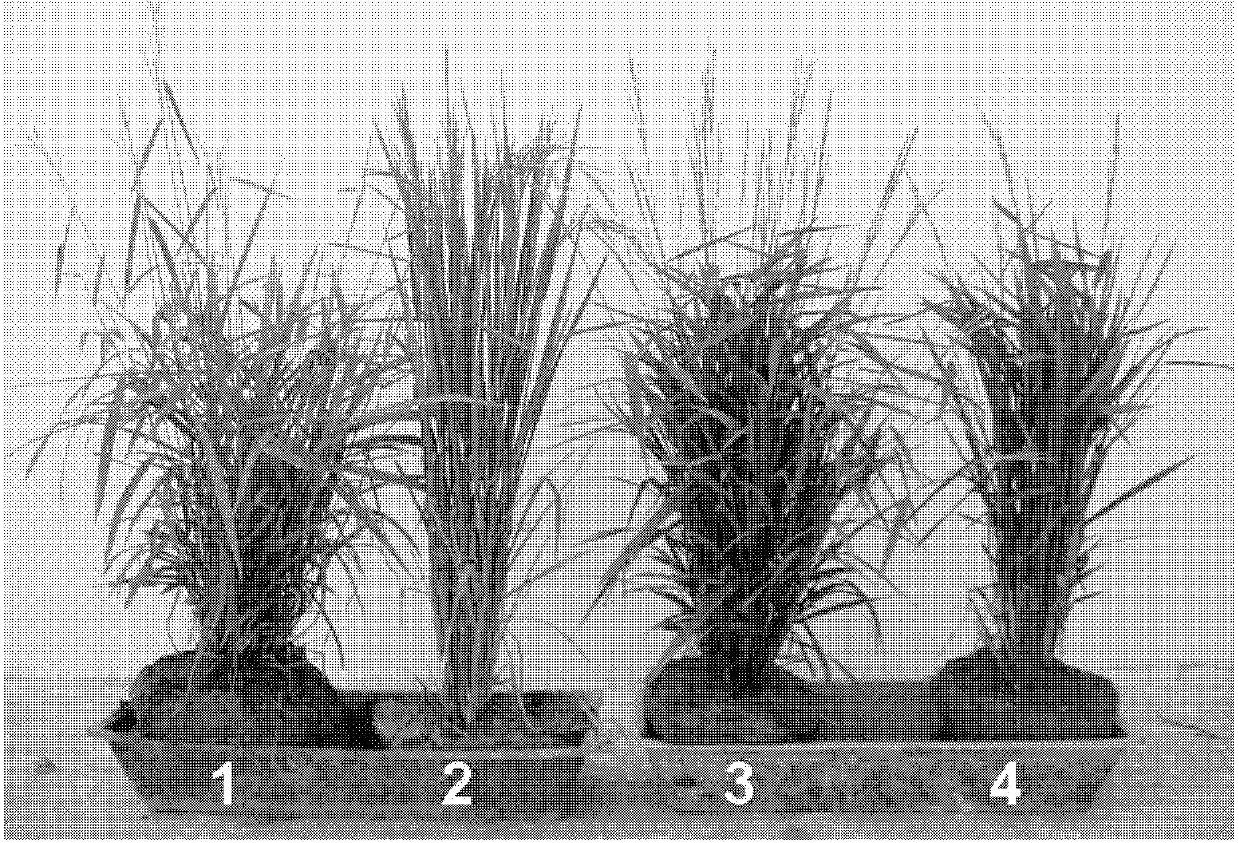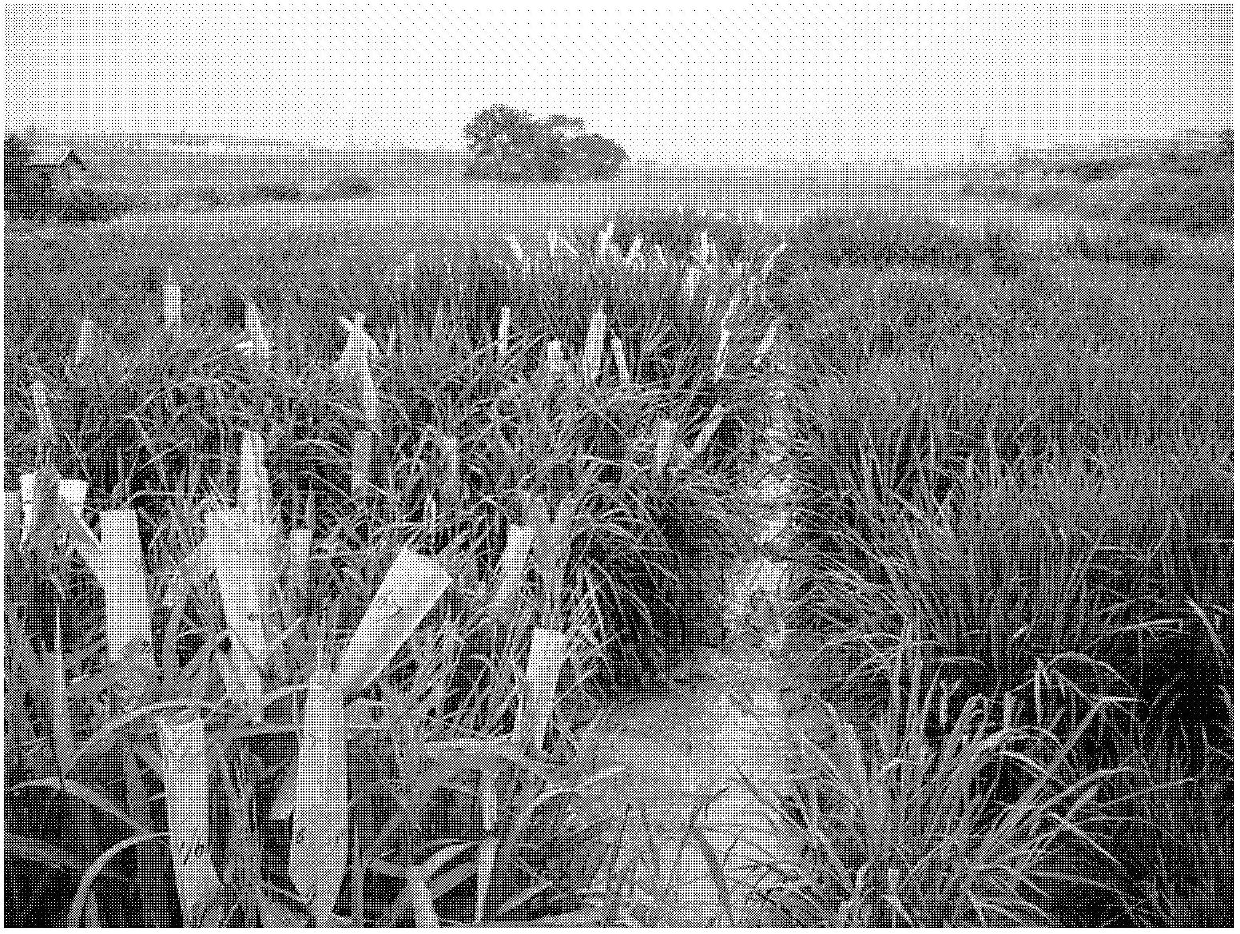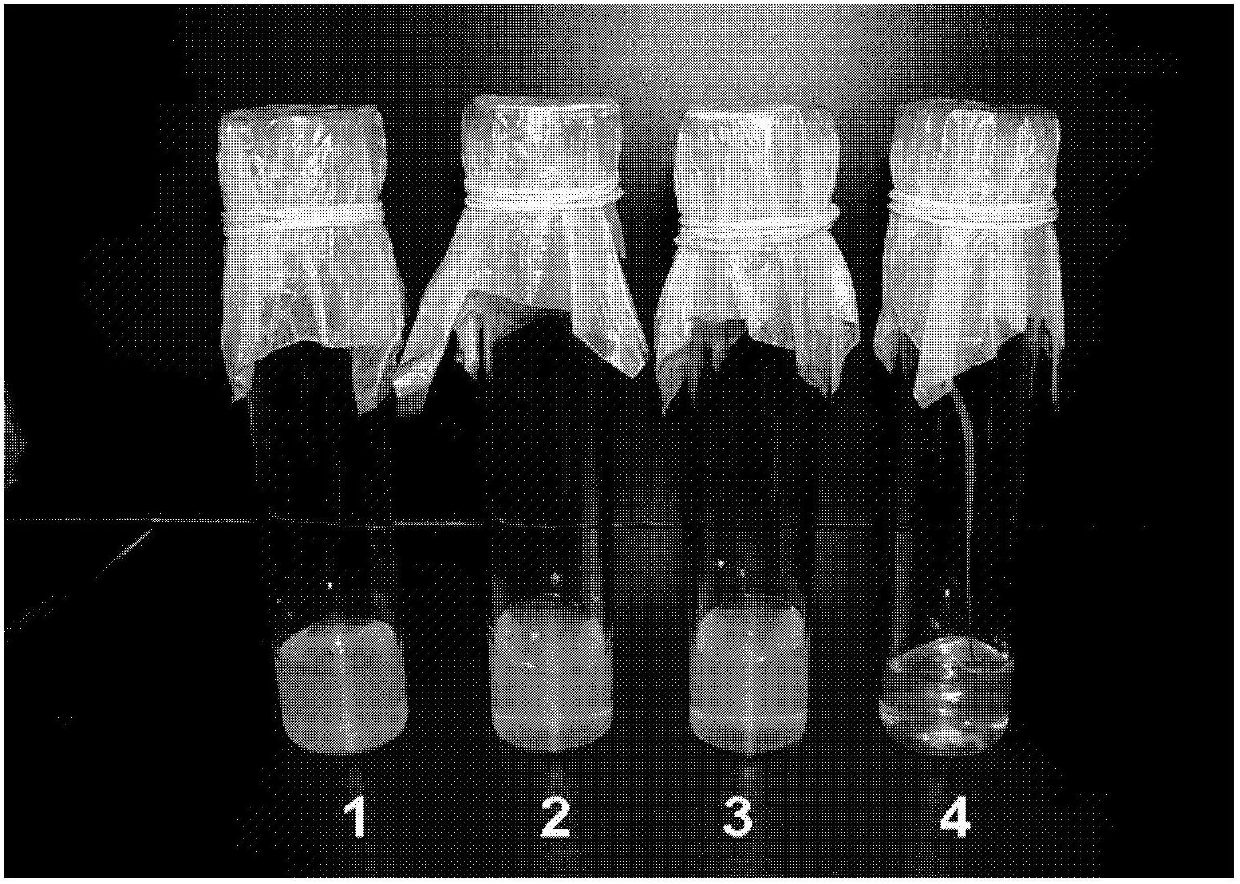Novel method for improving achievement rate of first backcross hybrid generation of oryza sativa and oryza minuta
A technology for cultivating rice and wild rice, applied in horticultural methods, botanical equipment and methods, plant regeneration, etc., can solve the problems of difficulty in obtaining the first generation of backcross hybrids, increase the number of pollinated florets, be easy to grasp, and improve pollination methods Effect
- Summary
- Abstract
- Description
- Claims
- Application Information
AI Technical Summary
Problems solved by technology
Method used
Image
Examples
Embodiment 1
[0033] The distant hybridization of the cultivated rice indica IR24 and O. sativa was carried out in Wuchang, Hubei. Due to the strong photosensitivity of the small-grained wild rice, the best heading period of the small-grained wild rice is from late September to early October under natural conditions, and short-light treatment is required for hybridization in Wuchang. Hybridization can be arranged in early September with the help of greenhouses and short light treatments.
[0034] When the flowering period of cultivated rice IR24 and wild rice agaricus meet, after 4:00 p.m., select 5-8 plants of IR24 with more panicles, relatively neat panicle layers, and flowering that day, and first use scissors to remove the plants that have opened that day. For the spikelets, treat the ears of rice with warm water at 44°C-46°C for 4-5 minutes to kill males, then manually cut glumes (cut off the upper 1 / 3 of each spikelet with scissors) and bagging ( Use a 28cm long and 10cm wide sodium ...
Embodiment 2
[0048] The distant hybridization of the cultivated rice japonica Nongken 58 and O. argentina was carried out in Wuchang, Hubei. Due to the strong photosensitivity of the small-grained wild rice, the best heading period of the small-grained wild rice is from late September to early October under natural conditions, and short-light treatment is required for hybridization in Wuchang. Hybridization can be arranged in early September with the help of greenhouses and short light treatments.
[0049] When the cultivated rice Nongken 58 meets the cultivated rice Nongken 58 at the flowering stage, the hybridization method is the same as that in Example 1.
[0050] After 10-12 days of hybrid immature embryo development, the enlarged ovary in the spikelet was taken out for embryo rescue. The method of embryo rescue is the same as in Example 1.
[0051] The first-generation hybrid of the cultivated rice Nongken 58 and the wild rice agaricus (BC 1 f 1 ) is obtained. The best heading p...
Embodiment 3
[0058] The distant hybridization between the cultivated rice indica Jin 23B and the wild rice O. sativa was carried out in Wuchang, Hubei. Due to the strong photosensitivity of the small-grained wild rice, the best heading period of the small-grained wild rice is from late September to early October under natural conditions, and short-light treatment is required for hybridization in Wuchang. Hybridization can be arranged in early September with the help of greenhouses and short light treatments.
[0059] When the cultivated rice Jin 23B and the cultivated rice Jin 23B meet at the flowering stage, the wild rice and the cultivated rice Jin 23B are hybridized, and the method of hybridization is the same as that in Example 1.
[0060] After 10-12 days of hybrid immature embryo development, the enlarged ovary in the spikelet was taken out for embryo rescue, and the embryo rescue method was the same as in Example 1.
[0061] The first-generation hybrid (BC) of rice Jin 23B and O. ...
PUM
 Login to View More
Login to View More Abstract
Description
Claims
Application Information
 Login to View More
Login to View More - R&D
- Intellectual Property
- Life Sciences
- Materials
- Tech Scout
- Unparalleled Data Quality
- Higher Quality Content
- 60% Fewer Hallucinations
Browse by: Latest US Patents, China's latest patents, Technical Efficacy Thesaurus, Application Domain, Technology Topic, Popular Technical Reports.
© 2025 PatSnap. All rights reserved.Legal|Privacy policy|Modern Slavery Act Transparency Statement|Sitemap|About US| Contact US: help@patsnap.com



